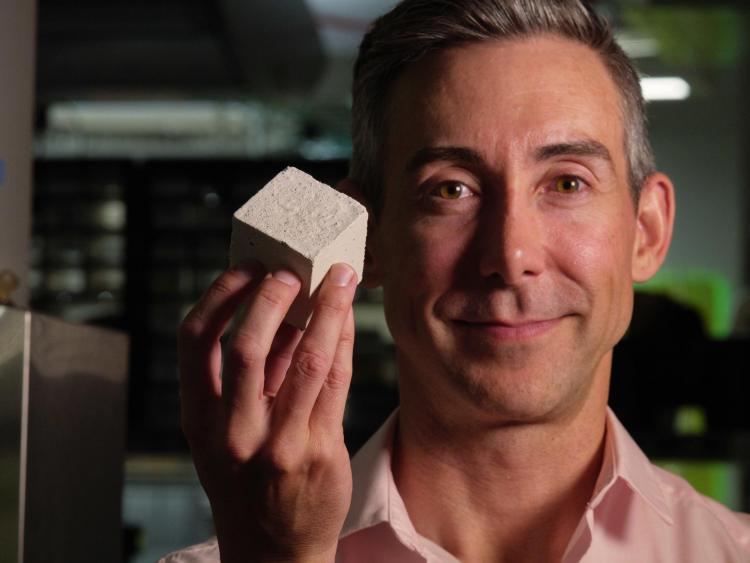 Wil Srubar
Wil SrubarAssociate Professor Wil Srubar has been nominated for the 2023 Pritzker Environmental Genius Award for his research re-imagining sustainable building materials.
Srubar is part of the Department of Civil, Environmental and Architectural Engineering and the Material Science and Engineering Program at CU Boulder. His lab conducts major research into biomimetic and living materials that have the potential to drastically reduce environmental pollution caused by construction activities around the globe.
Srubar joins a list of candidates – all under the age of 40 – working to advance environmental causes around the world. The roster includes leaders in fields such as sustainable design, wildlife law, shark conservation and carbon markets. In the coming months a committee will choose three finalists for the award. Then judges will select a winner to be announced at an Oct. 26 ceremony. Winners receive $100,000 and finalists take home $5,000 – made possible by a gift from the Anthony and Jeanne Pritzker Family Foundation.
Srubar said being included in such an impressive cohort of nominees is a true honor.
“For my living materials research and related entrepreneurial endeavors to be recognized in this way is both humbling and exhilarating,” he said. “Winning the award would bring world-renowned recognition and legitimacy to the idea that nature-based material solutions are critical to decarbonizing the construction industry and combatting the consequences of climate change.”
Srubar has been recognized for his research in a variety of venues recently. He was named to the Top 25 Newsmakers list by Engineering News Record and was the American Ceramic Society’s Cements Division Early Career Award winner in 2023. Previously, he was selected as the BioEnvironmental Polymer Society Outstanding Young Scientist in 2021 and won a prestigious National Science Foundation CAREER award in 2020. To date, his laboratory has received over $12 million in sponsored research funding through the U.S. National Science Foundation, Air Force Research Laboratories, ARPA-E and DARPA’s Biological Technologies Office.
